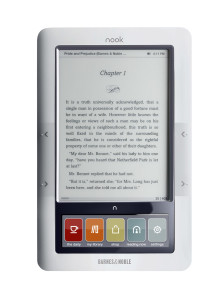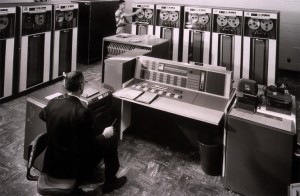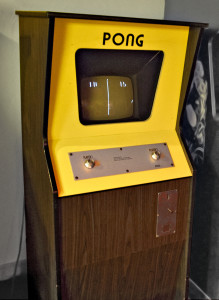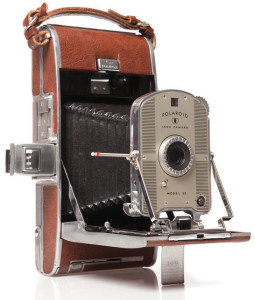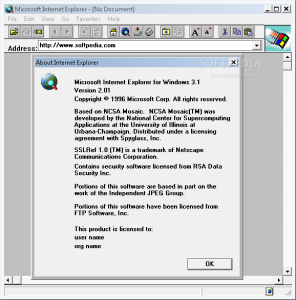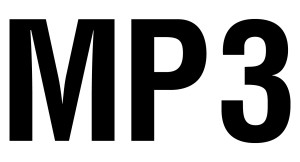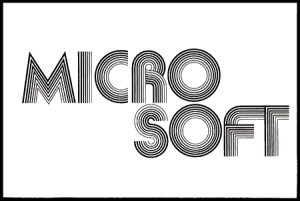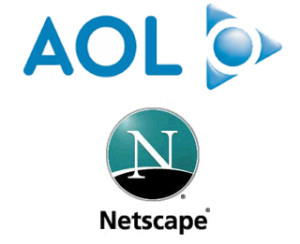Archive for November 2024
Barnes and Noble Releases Nook
Book retailer Barnes and Noble releases their first Nook e-reader to compete with the highly successful Amazon Kindle, released two years earlier.
While late to the game, and competing not only against Amazon but Apple’s iPad for e-reader marketshare, the Nook has competed well, likely due to Barnes and Noble’s strength as one of the few remaining brick and mortar book stores.
IBM 7090 Delivered
IBM delivers the first two IBM 7090 mainframe computers. One of the first commercially produced fully-transistorized computers, the 7090 and the later 7094 were notable for being used by NASA to control the Mercury and Gemini space flights along with many other significant scientific and government applications in the 1960’s. Some 7090’s were even used through the 1970’s into the 1980’s.
Altair 8800 Featured in Popular Electronics
November 29, 1974
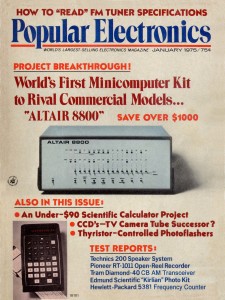
The story behind the collaboration of MITS and Popular Electronics for this particular issue is interesting. The recently hired editor of the magazine wanted more computer projects to be featured yet knew that existing microcomputer projects of the time were somewhat daunting for hobbyists to complete. They were looking for something that was a complete kit in a professional-looking enclosure. Another editor knew that MITS was working on a project that could fit their need and collaborated with them to have the kit ready for the January issue publication. While the first prototype was ready in October and was shipped to Popular Electronics, it never reached them due to either a strike by the shipping company or simply being lost or stolen (the story varies depending on the source). The article was actually written using pictures of an empty mock-up of the Altair and a prototype circuit board layout that was different than the finished product. Additionally, MITS left the naming of the microcomputer kit to the magazine. One of the editors claims that the inspiration for the name came from this 12-year old daughter who suggested calling it Altair after the location where the Star Trek Enterprise would be traveling in that night’s episode. However, other sources claim it was a technical editor of the magazine who came up with Altair when it was suggested the computer be named after a star. Whatever the truth is, the Altair 8800 was one of the most important computers in technology history and we all owe a great deal to this particular magazine issue for publicizing it.
Atari Introduces Pong
Atari introduces their first product, Pong, which would become the world’s first commercially successful video game. The story goes that Atari’s founder Nolan Bushnell installed the game at Andy Capp’s Tavern in Sunnyvale California on this day. Soon they were called by the bar owner complaining that the game stopped working. Upon investigating the problem, they found that the game was jammed with quarters. At least that is the legend but regardless there were 10,000 machines installed within 4 months.
The popularity of Pong sparked the beginning of the video game industry with Atari being the leader in both arcade and home video gaming through the early 1980’s.
Polaroid Instant Camera Goes on Sale
Just in time for the Christmas shopping season, 57 units of the first commercial instant camera, the Polaroid Land Camera Model 95, go on sale at the Jordan Marsh department store in Boston. Producing sepia toned photographs in about one minute, the Model 95 became a hit almost as quickly. Polaroid believed that 57 units would be enough last through Christmas. All 57 units and all the film available were sold on the first day. It was simple to use, portable, and the instant gratification that came from the self-developing film made the camera very popular. The name “Land” came from the camera’s inventor, Edwin H. Land, who was also the company’s founder. Nearly one million Model 95’s were produced, setting the stage for Polaroid’s flagship product line, making the company’s name synonymous with instant film and the cameras that used them. True black-and-white instant film was released in 1950, but Polaroid didn’t create color film until 1963. Polaroid produced their instant film cameras until 2008.
Microsoft Ships Internet Explorer 2.0
Nearly 6 months to the day after Bill Gates sent his Internet Tidal Wave memo recognizing the importance of the Internet, and only 3 months after releasing version 1.0, Microsoft releases Internet Explorer 2.0 for Windows 95 and Windows NT 3.5. IE 2.0 was still based on licensed code from Spyglass Mosaic, but was the first IE version to support now-common features such as SSL, JavaScript, and cookies. It was also the first version to allow the importing of bookmarks from Netscape Navigator, which at the time had a virtual monopoly on the web browser market. This was the first inklings of the “browser war” that was soon to erupt over the next few years.
MP3 Patented in US
November 26, 1996
United States Patent 5,579,430 is granted to the Fraunhofer Institut in Germany for a “digital encoding process”, the technology used in MEPG Audio Layer III, more commonly known as MP3. MP3 technology paved the way for the digital music industry by creating a high-quality format that was compressible so that many songs could fit on the relatively small data storage devices of the time. Fraunhofer had started work on compressing music as far back as 1977, began work on what would become MP3 in 1987, and was awarded a patent in Germany in 1989.
Microsoft Trademarked
November 26, 1976
Bill Gates and Paul Allen register the trade name “Microsoft” with the Office of the Secretary of State of New Mexico. Previously, Gates and Allen had been working under an informal partnership known as “Micro-soft”, a combination of Microcomputer and Software. The partnership continued for several more years until Microsoft incorporated in July of 1981, just prior to the introduction of the IBM PC.
Roxio Acquires Napster Legacy
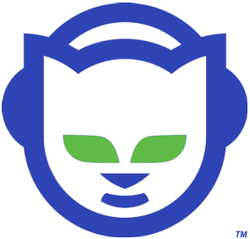
Digital media software company Roxio purchases the assets of the former Napster, including name, logo, domain name, technology portfolio, and other intellectual property. Napster was the peer-to-peer file sharing service that changed the music industry forever, facilitating the easy sharing of music, much to the chagrin of the established music industry. The RIAA sued Napster causing a judgement against the file-sharing service requiring them to monitor its network for copyright infringing material and restrict access when made aware of such incidents. Napster could not comply with this court order and shut down its service before declaring bankruptcy in 2002.
Roxio was the first company to attempt to use the Napster brand for a music service, renaming Pressplay as Napster 2.0. In September 2008, Best Buy purchased the Napster service for $121 million, before merging it with the Rhapsody service in December 2011.
AOL Buys Netscape
AOL announces it will buy Netscape Communications in a stock-for-stock deal worth approximately $4.2 billion. At the time it was considered a move by AOL and Netscape to merge forces to better compete with Microsoft in the browser and Internet provider markets. However, Microsoft’s dominance in the personal computer market could not be stopped and the Netscape browser lost almost all marketshare to Internet Explorer. In 2003 Microsoft settled a monopoly lawsuit with AOL (then merged with Time Warner) for $750 million over the loss of value of Netscape. AOL itself, once a dominant Internet Service Provider, slowly lost their subscriber base with the evolution of broadband Internet in the 2000’s and operates primarily as a media conglomerate, although their dial-up service still subscribes approximately 2 million users as of 2013.

